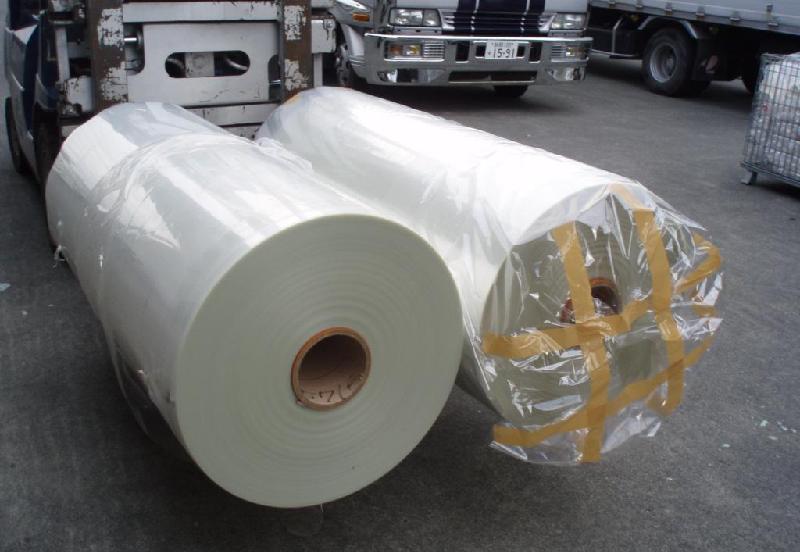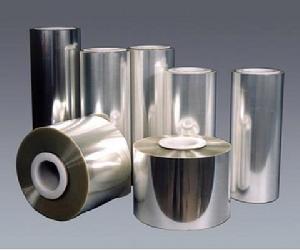| Nanjing Sumino Precision Machinery Co.,Ltd | WhatsApp 086 13390780291 Inquire Product information |
Stepwise biaxial stretching (LD¡úTD stretching) As mentioned in the past, simultaneous biaxial stretching is not suitable for the production of PET film. Most PET films are produced by a stepwise biaxial stretching process. The two-step biaxial stretching is composed of the following three steps. First, stretch the cast substrate in one direction, then uniaxially stretch the film in the other direction, and finally heat-cure the film.
Stepwise biaxial stretching is divided into two processes, one is LD¡úTD stretching (the film is stretched in the LD direction first, and then in the TD direction); the other is TD-¡úL,D stretching ( The film is first stretched in the TD direction and then stretched in the LD direction).

LD stretching is usually carried out between two pairs of rotating rollers. The stretching ratio is determined by the different rotation speeds between the rollers.¤·D is the main PET film processing technology in the world.

(4) Stepwise biaxial stretching (TD¡úLD stretching)
The process has the following advantages:
¡¤The film stretched in the LD direction is easy to process;
¡¤The "bow" phenomenon is low
¡¤Easy for high-speed processing (because the production speed is not limited by the speed of the tenter).
However, the serious problem of this process is that it is difficult to stretch a wide film in the longitudinal direction, because the wider the roll, the more likely it is to bend, and the wider nip roll usually cannot provide uniform and straight extrusion. force. The main process of PET film production in the world is the stepwise biaxial stretching method.

Step by step stretching LD¡úTD)
The role of the casting process is to cool the molten substrate extruded from the die into a non-oriented substrate. Because the melting point of PET is about 270¡ãC and the glass transition temperature is about 70¡ãC, molten substrates with a temperature higher than 270¡ãC should be quenched to below 70¡ãC. In this process, rapid quenching is very important. The low quenching rate often results in the crystallization of non-oriented substrates, which has a negative effect on subsequent stretching. The commonly used casting method is to use a rotating quenching roll, the molten substrate is wrapped around the quenching roll, and then the molten substrate is solidified into a non-oriented substrate. This casting method is effective for producing substrates with good thickness uniformity, because the roller acts as a support for the lower viscosity molten polymer. In the casting process, it is very important to quench the molten substrate as quickly as possible. There are two techniques for obtaining rapid quenching.

(1) Keep the temperature of the quench roll as low as possible. However, this method has considerable limitations, because low temperature often causes the formation of dew on the surface of the quench roll. In order to avoid dew, the temperature of the quenching roll is usually kept at about 20¡ãC.
(2) Make good contact between the surface of the quenching roller and the molten substrate In order to improve the contact between the surface of the quenching roller and the molten substrate, the following techniques can be used:
(A) Electrostatic pressing
(B) Pressure roll casting
(C) The surface of the quenching roller is coated with some liquid
(D) Air knife casting
Among these technologies, the electric pressing method is usually the best in terms of contact, thickness uniformity, and surface defect-free.
Nanjing Sumino Precision Machinery Co., Ltd. is a high-tech enterprise integrating scientific research, production and sales. It has always adhered to the business philosophy of integrity, equality, and customer benefits first. In order to better improve the quality of equipment, it has entered a more professional and standardized Production track. We have established independent research and development technologies for seven types of equipment including plastic sheet material, casting, bi-stretching, non-woven non-woven meltblown cloth, film laminating, recycling granulation environmental protection recycling system and coating machine manufacturing system The center and production department provide a complete set of professional technical solutions to meet the special needs of each customer. Among them, the biaxially oriented film manufacturing system includes: BOPP biaxially oriented film manufacturing system, PVC biaxially oriented shrink film production line, PET biaxially oriented film production line, BOPA biaxially oriented film production line, BOPA biaxially oriented film production line, etc.
Company Address: No. 11, Kaifeng Road, Moling Street, Jiangning District, Nanjing City, Jiangsu Province
Stepwise biaxial stretching is divided into two processes, one is LD¡úTD stretching (the film is stretched in the LD direction first, and then in the TD direction); the other is TD-¡úL,D stretching ( The film is first stretched in the TD direction and then stretched in the LD direction).

LD stretching is usually carried out between two pairs of rotating rollers. The stretching ratio is determined by the different rotation speeds between the rollers.¤·D is the main PET film processing technology in the world.

(4) Stepwise biaxial stretching (TD¡úLD stretching)
The process has the following advantages:
¡¤The film stretched in the LD direction is easy to process;
¡¤The "bow" phenomenon is low
¡¤Easy for high-speed processing (because the production speed is not limited by the speed of the tenter).
However, the serious problem of this process is that it is difficult to stretch a wide film in the longitudinal direction, because the wider the roll, the more likely it is to bend, and the wider nip roll usually cannot provide uniform and straight extrusion. force. The main process of PET film production in the world is the stepwise biaxial stretching method.

Step by step stretching LD¡úTD)
The role of the casting process is to cool the molten substrate extruded from the die into a non-oriented substrate. Because the melting point of PET is about 270¡ãC and the glass transition temperature is about 70¡ãC, molten substrates with a temperature higher than 270¡ãC should be quenched to below 70¡ãC. In this process, rapid quenching is very important. The low quenching rate often results in the crystallization of non-oriented substrates, which has a negative effect on subsequent stretching. The commonly used casting method is to use a rotating quenching roll, the molten substrate is wrapped around the quenching roll, and then the molten substrate is solidified into a non-oriented substrate. This casting method is effective for producing substrates with good thickness uniformity, because the roller acts as a support for the lower viscosity molten polymer. In the casting process, it is very important to quench the molten substrate as quickly as possible. There are two techniques for obtaining rapid quenching.

(1) Keep the temperature of the quench roll as low as possible. However, this method has considerable limitations, because low temperature often causes the formation of dew on the surface of the quench roll. In order to avoid dew, the temperature of the quenching roll is usually kept at about 20¡ãC.
(2) Make good contact between the surface of the quenching roller and the molten substrate In order to improve the contact between the surface of the quenching roller and the molten substrate, the following techniques can be used:
(A) Electrostatic pressing
(B) Pressure roll casting
(C) The surface of the quenching roller is coated with some liquid
(D) Air knife casting
Among these technologies, the electric pressing method is usually the best in terms of contact, thickness uniformity, and surface defect-free.
Nanjing Sumino Precision Machinery Co., Ltd. is a high-tech enterprise integrating scientific research, production and sales. It has always adhered to the business philosophy of integrity, equality, and customer benefits first. In order to better improve the quality of equipment, it has entered a more professional and standardized Production track. We have established independent research and development technologies for seven types of equipment including plastic sheet material, casting, bi-stretching, non-woven non-woven meltblown cloth, film laminating, recycling granulation environmental protection recycling system and coating machine manufacturing system The center and production department provide a complete set of professional technical solutions to meet the special needs of each customer. Among them, the biaxially oriented film manufacturing system includes: BOPP biaxially oriented film manufacturing system, PVC biaxially oriented shrink film production line, PET biaxially oriented film production line, BOPA biaxially oriented film production line, BOPA biaxially oriented film production line, etc.
Company Address: No. 11, Kaifeng Road, Moling Street, Jiangning District, Nanjing City, Jiangsu Province




